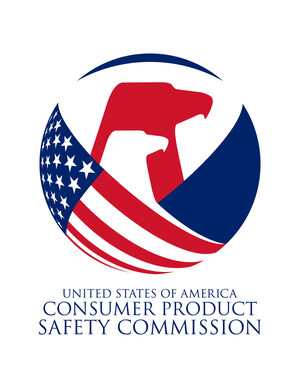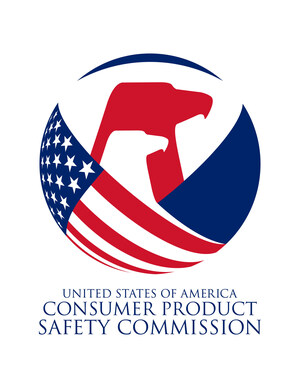WASHINGTON, Oct. 19, 2022 /PRNewswire/ -- The U.S. Consumer Product Safety Commission (CPSC) has approved a new federal mandatory safety standard for clothing storage units (CSUs) that will significantly change the way clothing storage units are tested and labeled. Young children are most at risk of injury or death from tip over incidents with this type of furniture, which includes products such as chests, bureaus, dressers, armoires, wardrobes, chests of drawers, drawer chests, chifforobes and door chests.
CPSC staff is aware of 234 fatalities resulting from clothing storage unit tip overs from January 2000 through April 2022, including 199 child fatalities. Staff estimates that there were 84,100 tip-over-related injuries (an estimated annual average of 5,300 injuries) with CSUs treated in a U.S. hospital emergency department from 2006 through 2021. Of these, staff estimates that 72 percent were injuries to children. From January 2000 through July 2022, there have been 43 recalls in response to tip-over hazards of CSUs, involving more than 21 million units.
"Each year, children are killed or injured in dresser tipover incidents. The standard set today will ensure that dressers are safer and fewer children are at risk," said CPSC Chairman Alex Hoehn-Saric. "I want to thank the members of Parents Against Tipovers and other consumer advocates who have spent years pushing the agency to set a strong standard that will protect children going forward. I am pleased that the CPSC was able to achieve that goal and commend the staff for their hard work and dedication."
The new standard would require CSUs to exceed minimum stability requirements and display important safety information and performance and technical data. The stability requirements reflect real-world factors, like multiple open drawers, drawers containing clothing-representative loads, angling CSUs to replicate the effects of placement on carpet and forces a child exerts while climbing or pulling on a CSU, all of which are shown to occur during CSU tip overs and contribute to their instability.
The standard also includes test methods for CSUs with interlocks. Interlocks can improve CSU stability, by preventing all drawers from being opened at once. In addition to the stability requirements, the new standard requires that CSUs are marked and labeled with safety and identification information and display a hang tag providing performance and technical data about the product's stability.
CPSC's Anchor It! campaign works to raise awareness of the dangers to children from furniture tip overs. See www.anchorit.gov for more information on how to prevent tip-over incidents and save children's lives.
The Commission voted 3 to 1 to approve the standard on October 19, 2022. It takes effect 180 days after it is published in the Federal Register.
CPSC Chair and Commissioner Statements:
Commissioner Feldman Statement
About the U.S. CPSC
The U.S. Consumer Product Safety Commission (CPSC) is charged with protecting the public from unreasonable risk of injury or death associated with the use of thousands of types of consumer products. Deaths, injuries, and property damage from consumer product-related incidents cost the nation more than $1 trillion annually. CPSC's work to ensure the safety of consumer products has contributed to a decline in the rate of injuries associated with consumer products over the past 50 years.
Federal law prohibits any person from selling products subject to a Commission ordered recall or a voluntary recall undertaken in consultation with the CPSC.
For lifesaving information:
- Visit CPSC.gov.
- Sign up to receive our e-mail alerts.
- Follow us on Facebook, Instagram @USCPSC and Twitter @USCPSC.
- Report a dangerous product or a product-related injury on www.SaferProducts.gov.
- Call CPSC's Hotline at 800-638-2772 (TTY 301-595-7054).
- Contact a media specialist.
Release Number: 23-017
SOURCE U.S. Consumer Product Safety Commission

WANT YOUR COMPANY'S NEWS FEATURED ON PRNEWSWIRE.COM?
Newsrooms &
Influencers
Digital Media
Outlets
Journalists
Opted In






Share this article